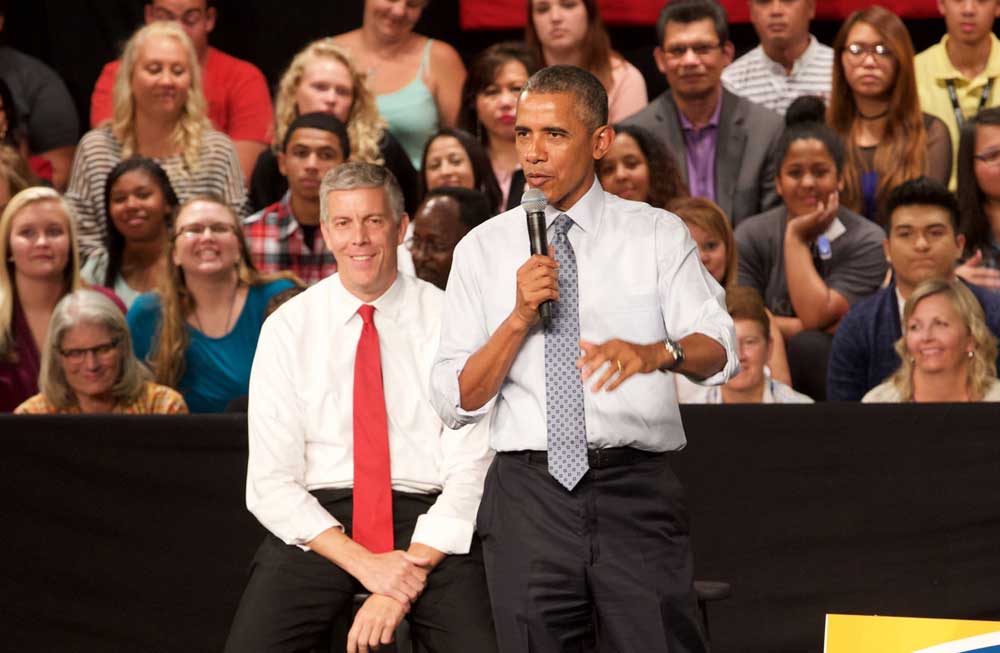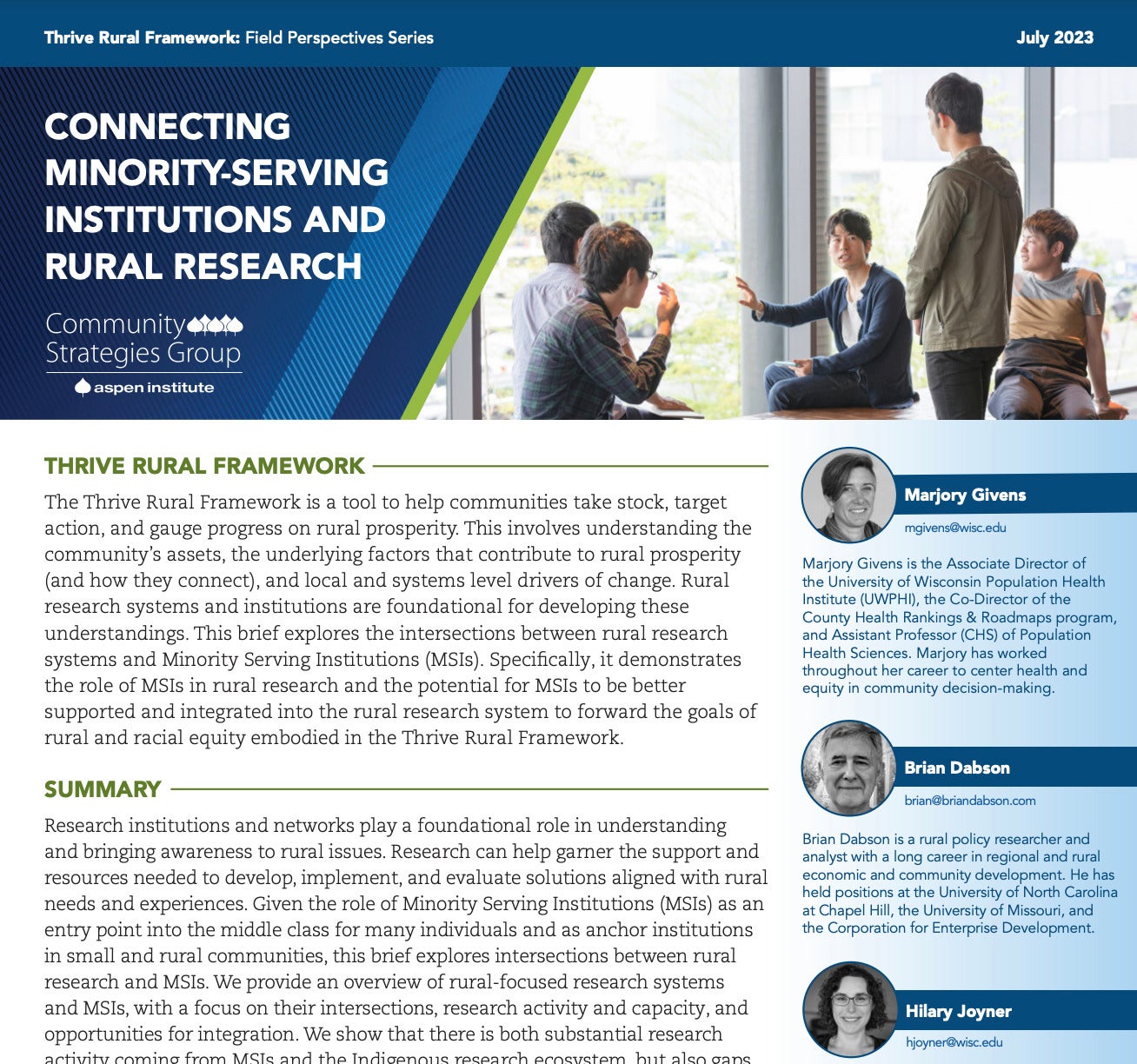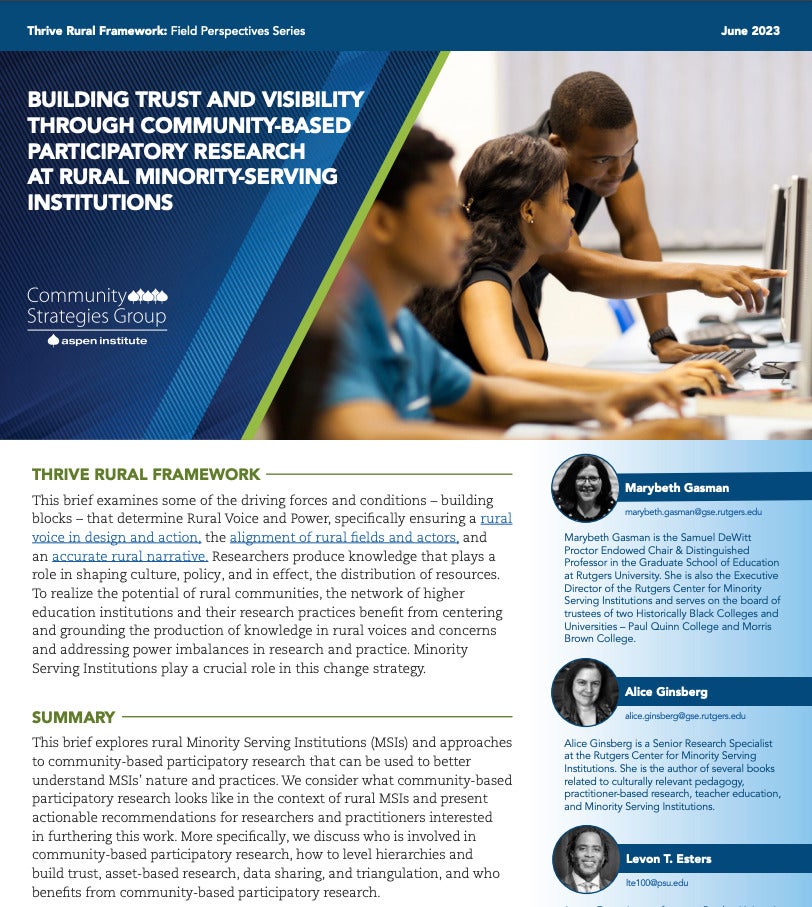The U.S. Department of Education’s new (and long-awaited) online college scorecard is being touted as a one-stop shop for prospective students and parents about student outcomes from different colleges and universities. With graduation rates and tuition costs already available on other sites, how is this scorecard different? The most intriguing new data on the website reveal not only how much debt students leave college with, but also the percentage of students from each college who earn more than $25,000 six years after enrolling — the average wage of the typical high school graduate.
The way this new scorecard has been presented, analyzed, and subsequently picked apart makes it seem that the only people who should care about the new employment and wage information are students and parents — the ”consumers” of higher education. Of course, those audiences matter. Research shows that students attend college for one reason above all others: To increase their chances of getting and keeping a job with good wages.
But there is another audience that is just as important: The people who lead, staff, and teach at America’s colleges and universities. Because it focuses so much on the consumer perspective, many inside higher education see this scorecard as something being done “to” them, an effort to portray learning as a commodity like a cell phone or a new car. But if colleges and universities stop seeing the scorecard as a “Consumer Reports” for prospective students and instead look at it as a tool for improvement, it may end up having an even more positive impact on outcomes then anyone imagined. What would that look like?
Consider Washington State’s Walla Walla Community College: In 1999, with its rural agricultural economy in decline, the school’s leaders saw bleak job prospects for future graduates. So the college began a makeover of its programs to reflect the career needs of the future. The 7,000-student school doubled the size of its nursing program and added substantial new offerings in wind energy, water management, and wine-making. Today, the talented students graduating from this institution help fuel economic growth for an entire community that offers wages and employment rates much higher than similar communities elsewhere.
Santa Fe College in Gainesville Florida is a community college that aligns its liberal arts programs to rigorous degree requirements at nearby University of Florida. As a result, Santa Fe is among the national leaders in ensuring that students who begin at a community college complete a bachelor’s degree — a credential with median annual earnings 29 percent higher than an associate’s degree, according to the National Center for Education Statistics. Not surprisingly, the Department of Education scorecard has Santa Fe leading the state’s 28 community colleges in average earnings.
Unfortunately, not enough colleges rigorously assess whether their students are attaining the right skills or graduating with the credentials and skills needed for success in the workplace. Efforts to assess improvement in student learning are increasing, thanks to national efforts such as the LEAP project of the American Association of College and Universities. Similarly, increasing numbers of schools are working hard to improve college graduation rates, including those working with the non-profits Achieving the Dream, Complete College America, and the Education Trust.
The power of the new scorecard is that it helps colleges and universities complete the picture. By helping them understand the relationship between what students learn, the degrees they earn, and their future success in the labor market, colleges and universities can use the new scorecard as an important signal of the value their education delivers.
Finding out that outcomes are imperfect — that many of their students don’t earn more than the average high school graduate — shouldn’t push colleges to shift their educational focus away from a liberal arts education to the delivery of purely technical skills. After all, employer surveys consistently show that college graduates entering the workplace often lack the kinds of critical thinking and communications skills that degrees in history or chemistry or political science are meant to impart. Instead, as the experiences of Walla Walla and Santa Fe show, aligning programs with labor market demands can help colleges transform their programs to ensure students have the critical thinking, communications, and technical skills needed to succeed in the next stage of their lives.
Our nation’s thousands of colleges and universities offer incredibly diverse opportunities for students from every walk of life to develop their talents. As the cost of higher education grows and state budgets become more constrained, these institutions must set themselves apart not just by the programs and amenities they offer, but by the results they deliver. In that context especially, they should welcome the opportunity to innovate and improve that the new college scorecard presents.


